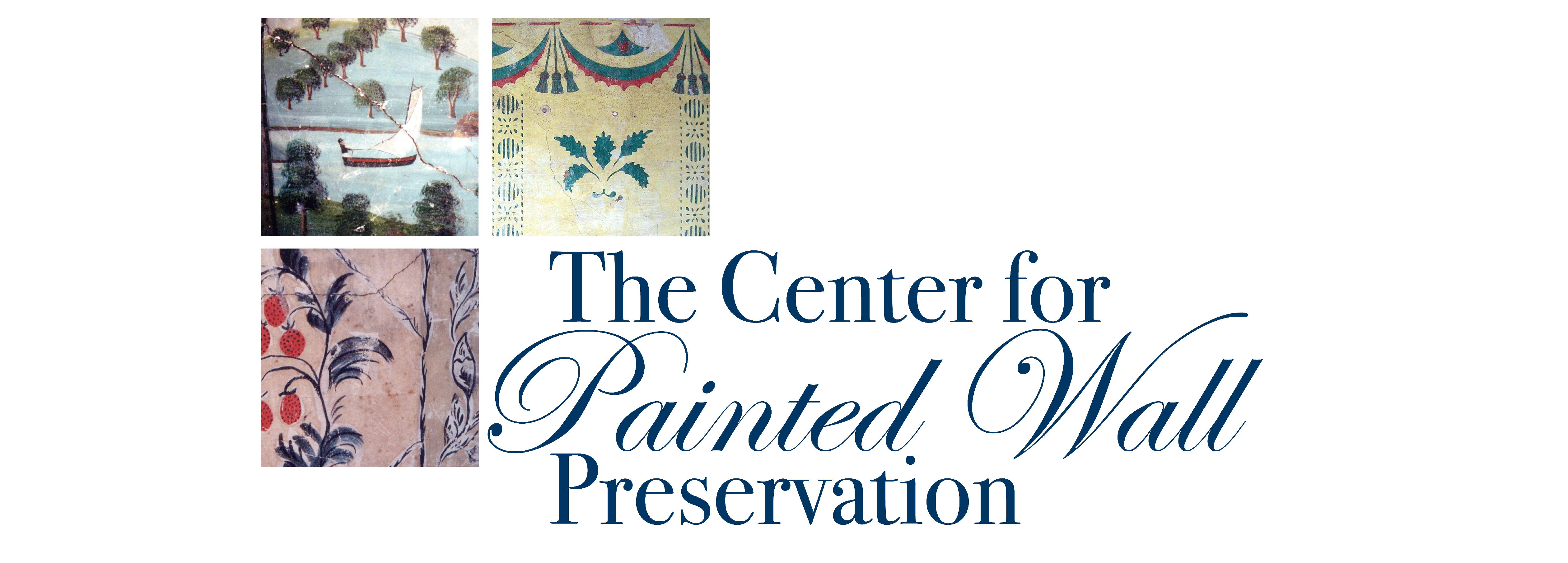
Wall Removal
The Center for Painted Wall Preservation (CPWP) promotes living with murals that are original as much as possible. Each decorated plaster surface was individually designed by artisans to fit the space and context of the building. The original placement is important to the value of the artwork and removing them diminishes that value.
If there is no choice and walls need to be removed from their original environment there are professional experienced architectural salvage dealers who are able to extract the walls without damage. We highly recommend a professional be engaged to guarantee the viability of a wall’s condition for the future.
CPWP
TRUSTED
David Ottinger
Antique Building Materials of Boston
David has been in the salvage business for over 30 years and dealt with the successful stabilization and removal of several sets of painted walls— saving them from destruction in houses being razed. David is fully insured and qualified to undertake the tedious procedure of wall removal, whether the the walls are being removed because house is being demolished or due to other pre-existing conditions.
Find more information on preservation, conservation, and more CPWP-trusted professionals by browsing our resource pages:


Removal Example
In the case of walls being removed and leaving the house consideration must be given as to the structural integrity of the existing house, since in many cases a side or back of the structure will need to be removed to get the walls out, then replacing it. This was the situation in the removal of the important signed and dated Jonathan D. Poor murals from the East Baldwin, ME Norton house.


The house is situated within several feet of a rail line that had plans to reactivate. The house was going on the market and these paint decorated plaster walls were recognized as the very best examples of Jonathan D. Poor's work. The walls had never been compromised by wallpaper, paint or plaster overcoat. They were considered far too important and rare to risk being damaged in the future and were donated in 2011 to the Rufus Porter Museum, in Bridgton, ME to assure their preservation. They are slated for installation in their new museum facility when it is built.
The murals were at the top of a "good morning" center stairway in the hall and in bedchambers to the left and right of the stairway. The longest wall measured 28’ and can be seen on the crane being removed from the west side of the little cape.
The walls were stabilized with glue on the lathe side to strengthen them in preparation for transit and storage. They were then framed in with 2x8’s to strengthen the walls for moving.
They have been put into storage until the Rufus Porter Museum is ready for installation.
It must be noted that it is optimal that the destination of walls being removed is identified before they are taken out as many times the hoped for benefit of sale does not occur and the walls are further damaged in storage.
